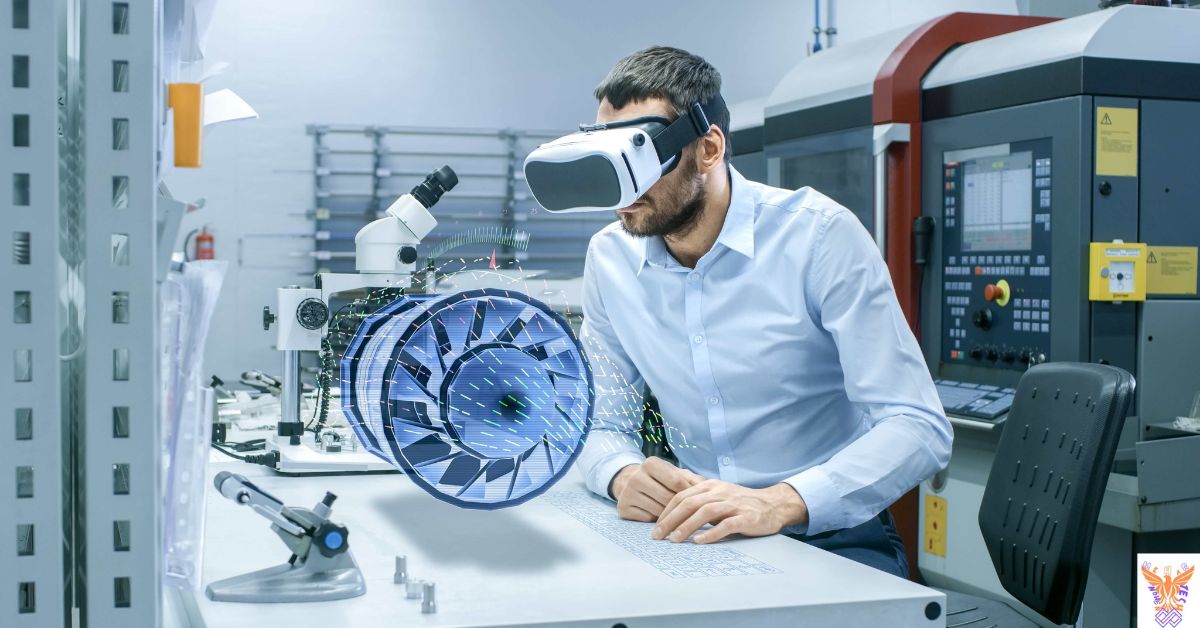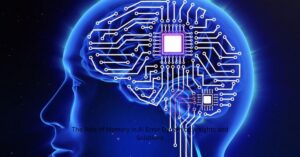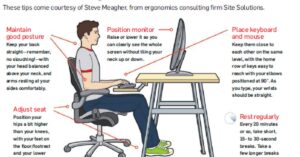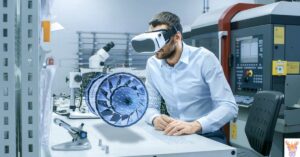The manufacturing industry is at the brink of a transformation ahead of it as Advanced technologies emerge to revolutionize the production process by enhancing efficiency and fostering innovation in unprecedented ways. From 3 printing, to robotics supported by artificial intelligence (AI) these innovative tools are poised to revolutionize factory operations worldwide.
In a scenario where personalization is paramount and items are crafted to meet specific requirements quickly and efficiently—this isn’t a mere fantasy but rather the actuality being brought forth by advanced manufacturing techniques at present times.
Looking ahead at the industrys horizon reveals a truth – those who adopt these technologies will be at the forefront of progressivity in manufacturing innovation is not just about production; it’s, about enhancing efficiency and intelligence like never before.
Current State of Advanced Manufacturing
The manufacturing scene today looks drastically different from the fashioned factories that used to spew out smoke in the past decades. Modern factories utilize the Internet of Things (IoT) to link machines and oversee operations for efficient production on the spot. Furthermore 3D printing or additive manufacturing has evolved beyond prototyping and is now used to fabricate intricate products, with unconventional shapes that were previously unachievable using traditional techniques.
The trend these days is, about automation. Where collaborative robots (cobots) teaming up with humans to enhance productivity and safety are gaining momentum swiftly! At the time data analytics and machine learning algorithms are busy analyzing extensive data to assist managers in making well informed decisions and anticipating maintenance requirements in advance to prevent breakdown situations from happening.
Related this post : Revo Technologies Murray, Utah’s Hub for Technology Solutions
Emerging Technologies

A new era of advancements is on the horizon that is expected to greatly enhance manufacturing processes. Artificial intelligence is poised to transform aspects of production including design and quality assurance. Generative AI has the ability to generate product designs that skilled human engineers may not have considered. While quantum computing is still, in its stages of development it has the potential to tackle intricate optimization challenges that could revolutionize supply chain management and material research.
Nanotechnology is pushing the boundaries of material properties by creating products that’re stronger yet lighter and more versatile in nature. The progress in augmented reality (AR) well as virtual reality (VR) is being applied in different fields like training programs and design visualization, in manufacturing sectors to smoothly blend the digital world with the real world.
Impact of Artificial Intelligence and Machine Learning
- Collaborative robots working safely alongside human workers
- Autonomous mobile robots streamlining warehouse operations
- Robotic process automation handling repetitive office tasks
- Soft robotics enabling delicate material handling
- Swarm robotics coordinating multiple machines for complex tasks
- Exoskeletons enhancing worker strength and reducing injuries
- Micro-robotics performing precision assembly at microscopic scales
- Self-reconfiguring robots adapting to different manufacturing needs
- Teleoperated robots allowing remote control in hazardous environments
- AI-powered robots learning and improving tasks over time
The Role of Robotics and Automation
- Collaborative robots working safely alongside human workers
- Autonomous mobile robots streamlining warehouse operations
- Robotic process automation handling repetitive office tasks
- Soft robotics enabling delicate material handling
- Swarm robotics coordinating multiple machines for complex tasks
- Exoskeletons enhancing worker strength and reducing injuries
- Micro-robotics performing precision assembly at microscopic scales
- Self-reconfiguring robots adapting to different manufacturing needs
- Teleoperated robots allowing remote control in hazardous environments
- AI-powered robots learning and improving tasks over time
Advances in Additive Manufacturing
Using 4 Simple Steps; 1. 4 Printing is not solely reserved for enthusiasts anymore—its changing the way we create objects, from medical implants to aerospace components; its expanding the limits of what can be achieved.
The latest breakthroughs include:
- Multi-material printing for complex, functional parts
- Metal 3D printing at industrial scales
- Bioprinting of living tissues for medical research
- 4D printing, where objects change shape over time
These advances are reshaping supply chains, enabling on-demand production and reducing the need for large inventories. They’re also unleashing creativity, letting designers create shapes that were once impossible to manufacture. As the technology matures, we’re seeing faster prints, better materials, and lower costs—a triple threat that’s set to disrupt industries across the board.
Also read this post : PRECISION TECHNOLOGIES INTERNATIONAL LIMITED
Development of Advanced Materials:
- Programmable matter reshaping objects on command
- Self-assembling nanostructures for targeted drug delivery
- Quantum dots revolutionizing display technologies
- Aerogels insulating spacecraft with ultralight materials
- Shape memory alloys “remembering” their original form
- Piezoelectric materials harvesting energy from vibrations
- Biomaterials mimicking human tissue for medical implants
- Photonic crystals manipulating light for optical computing
- Thermoelectric materials converting waste heat to electricity
- Self-healing concrete extending infrastructure lifespans
Digital Twins and Simulation Technologies:
- Virtual factories optimizing layouts before physical construction
- Real-time production tweaks based on digital simulations
- Predictive maintenance powered by sensor-fed digital replicas
- Training simulations in hazardous environments without risk
- Product lifecycle management through virtual prototypes
- Supply chain resilience testing with digital scenario planning
- Customer experience previews using digital product twins
- AI-driven design iterations in virtual environments
- Collaborative engineering across continents via shared models
- Environmental impact forecasting for sustainable manufacturing
Sustainability and Green Manufacturing

Gone are the days when factories belched smoke without a care. Today’s manufacturers are going green, and it’s not just good PR—it’s good business. They’re slashing energy use, cutting waste, and even turning trash into treasure.
- Solar panels and wind turbines are popping up on factory roofs
- Smart systems optimize energy use, shutting down idle machines
- Recycled materials are finding new life in products
- 3D printing is reducing material waste by up to 90%
But it’s not just about saving the planet. Green manufacturing is saving money too. Companies are finding that sustainable practices often lead to leaner, more efficient operations. It’s a win-win that’s reshaping the industrial landscape.
Cybersecurity in Manufacturing
In todays era of factories and technology integration cybersafety concerns have transitioned from being solely the responsibility of IT professionals to a shared concern among all individuals involved. With the increasing interconnectedness of machines they are at risk of being targeted by hackers. A breach in security could lead to disruptions, in production processes, theft of intellectual property or even physical harm and destruction.
Manufacturers are fighting back with:
- Firewalls and intrusion detection systems
- Regular security audits and penetration testing
- Employee training to spot phishing and other threats
- Segmented networks to limit the spread of attacks
However it’s not all pessimistic news out there! The interconnectedness that brings about risks also presents opportunities for safeguarding assets in ways. By leveraging live monitoring capabilities to detect irregularities swiftly and the advancements, in AI driven technologies that enhance the ability to anticipate and thwart attacks proactively are developments worth noting.
Development of Advanced Materials:
- Programmable matter reshaping objects on command
- Self-assembling nanostructures for targeted drug delivery
- Quantum dots revolutionizing display technologies
- Aerogels insulating spacecraft with ultralight materials
- Shape memory alloys “remembering” their original form
- Piezoelectric materials harvesting energy from vibrations
- Biomaterials mimicking human tissue for medical implants
- Photonic crystals manipulating light for optical computing
- Thermoelectric materials converting waste heat to electricity
- Self-healing concrete extending infrastructure lifespans
Digital Twins and Simulation Technologies:
- Virtual factories optimizing layouts before physical construction
- Real-time production tweaks based on digital simulations
- Predictive maintenance powered by sensor-fed digital replicas
- Training simulations in hazardous environments without risk
- Product lifecycle management through virtual prototypes
- Supply chain resilience testing with digital scenario planning
- Customer experience previews using digital product twins
- AI-driven design iterations in virtual environments
- Collaborative engineering across continents via shared models
- Environmental impact forecasting for sustainable manufacturing
Challenges and Barriers to Adoption

| Challenge Category | Specific Barrier | Potential Impact |
| Financial | High initial investment costs | Slows adoption, especially for SMEs |
| Uncertain ROI timelines | Hesitancy in decision-making | |
| Technical | Complexity of integration | Disruption to existing processes |
| Lack of standardization | Interoperability issues | |
| Workforce | Skills gap | Difficulty in implementation and operation |
| Resistance to change | Reduced efficiency and innovation | |
| Data Security | Cybersecurity risks | Vulnerability to attacks, data breaches |
| Data privacy concerns | Regulatory compliance issues | |
| Infrastructure | Inadequate digital infrastructure | Limited connectivity and data flow |
| Legacy systems compatibility | Costly upgrades or replacements | |
| Regulatory | Evolving legal frameworks | Uncertainty in compliance |
| Intellectual property concerns | Hesitancy in sharing data and designs | |
| Supply Chain | Disruption to existing networks | Logistical challenges and costs |
| Dependency on new, untested suppliers | Quality and reliability concerns |
Frequently asked question
What’s the biggest game-changer in advanced manufacturing?
AI and machine learning are revolutionizing everything from design to quality control.
How’s 3D printing reshaping manufacturing?
It’s enabling complex designs, reducing waste, and allowing for mass customization.
Will robots replace human workers?
Not entirely. Cobots are working alongside humans, enhancing productivity and safety.
How’s sustainability factoring into advanced manufacturing?
Green tech is cutting energy use and waste, often leading to cost savings too.
What skills will future manufacturing workers need?
Skills in literacy and flexibility are crucial, for collaborating effectively with AI and robotics technology.
Conclusion
Standing at the brink of an industrial age fills us with hope as we envision the bright future of cutting edge manufacturing technologies ahead of us. From design powered by intelligence to items crafted using 3D printing technology and the integration of collaborative robots in production processes along with environmentally friendly manufacturing methods. The horizon appears limitless, with opportunities. These advancements aren’t merely altering our approach to production; they are reshaping our perception of what we can achieve.
With power comes great responsibility indeed! As we welcome these technologies into our lives and workplaces alike we must also confront issues such as cybersecurity protection, employee skill development and sustainable practices. The businesses that truly succeed will be the ones of maneuvering through this intricate terrain finding the perfect equilibrium, between progress and safeguarding, effectiveness and environmentally conscious actions.













